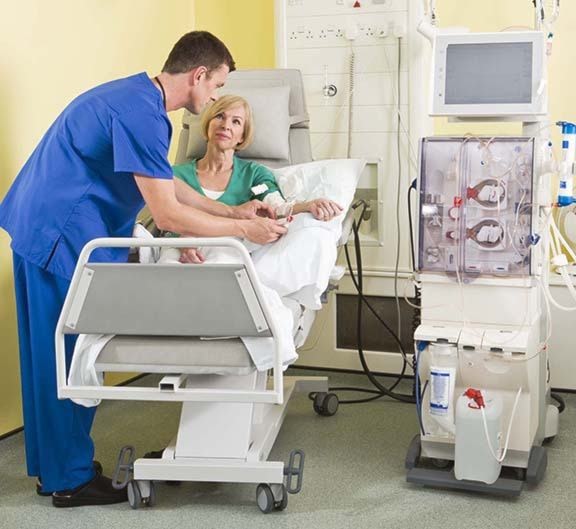Terry Farrell
Record staff
Monday morning.
Waking up feeling lethargic… itchy skin, muscle cramps, nausea.
For many people with kidney disease, it’s a typical start to the week.
Those symptoms are the signal that it’s time for dialysis.
Four hours later, a hemodialysis machine has flushed out the toxins and the patient can go about his or her day, after an hour or two of recovery time.
Good to go. All clear.
Until Wednesday.
Then it’s time to repeat the cycle.
Three times a week. Every week.
Such is the routine for a person afflicted with kidney disease.
There is an option.
Rather than the aforementioned hemodialysis – which can sometimes be done in the comfort of one’s home, after an intense training period, and the installation of the proper equipment –some patients can choose peritoneal dialysis.
“Your abdominal cavity, inside your belly, is called your peritoneal cavity,” explained Heather Johnson, director of programs with the Kidney Foundation of Canada, BC Branch. “With peritoneal dialysis, people have a catheter inserted in their abdomen ... Some use a machine called a cycler. Overnight, the dialysis fluid goes in, and through osmosis, the impurities come into the fluid, then the fluid gets drained out with all the toxins. So it functions like the filtering that the kidney is not capable of doing.”
This option is a nightly occurrence.
Peritoneal dialysis can also be performed throughout the day (continuous ambulatory peritoneal dialysis), in smaller cycles (30-45 minutes) but numerous times (three to four) during the day.
“Peritoneal dialysis patients have to do it every day,” said Johnson.
“And keep in mind, that being on dialysis does not bring your kidney function up to what (a healthy person) would have. It only provides about 15 per cent kidney function. So it is very trying. People may feel poorly after dialysis, because you have to recover. One may feel poorly before dialysis, because the toxins are building up.”
None of the options are pleasant.
The alternative is worse: death - usually within a few weeks. The toxins build up and eventually shut down the body.
No cure
There is no cure for kidney disease; only maintenance.
“Even kidney transplants do not cure kidney disease,” said Johnson. “Transplant recipients are still considered to have kidney disease. If they are young when they receive a kidney transplant, even their transplanted kidney is unlikely to last. It may work for 30 years, but if you get transplanted as a child, you may need another transplant, or may end up on dialysis when that new kidney fails. So none of this is a cure.”
Temporary
According to the National Kidney Foundation, although some patients can live upwards to 30 years on dialysis, the life expectancy for someone on dialysis is, on average, five to 10 years.
“And yet the wait for a transplant is about that (five years), or even longer, depending on your blood type,” said Johnson.
You can help
On September 21, the 2014 Comox Valley Kidney Walk/Run will take place at Simms Park in Courtenay.
The 2.5 km walk and the 5 km fun run helps raise funds for The Kidney Foundation of Canada, working together to help millions of Canadians suffering from kidney disease. Funds are used to increase organ donation, fund research, provide support for kidney patients and their families, and to educate the public about the importance of kidney health.
For more info on the event, or to donate to the cause, visit www.comoxvalleykidneywalk.ca.
editor@comoxvalleyrecord.com
